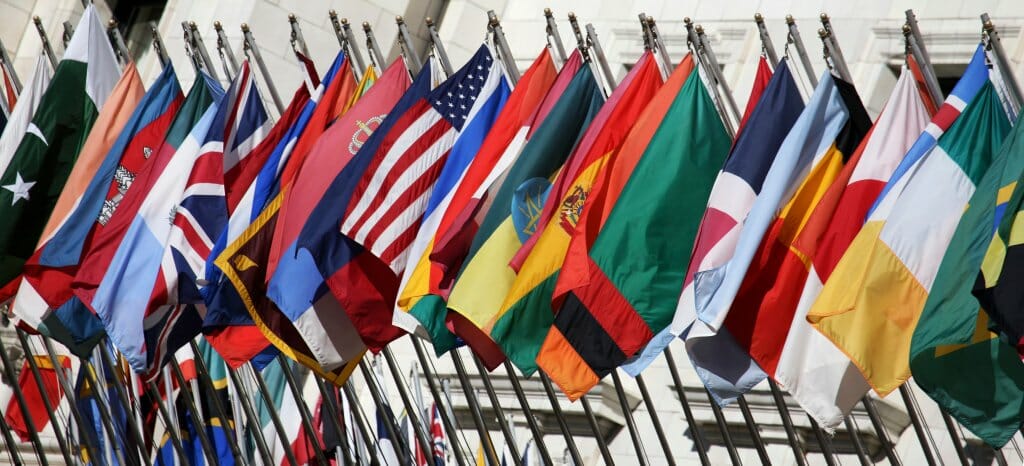This week in diplomatic and military history: November 3
Kevin Powell | Nov 03, 2014
5 November 1757: The Battle of Rossbach and the Negotiation of Prussian Power in Europe
The rise of Prussia, still perhaps a second-rate Continental power by 1750, amidst the European power play of Hapsburgs and Bourbons and an Anglo-French imperial rivalry, is a phenomenon best told in the light of processes of military consolidation and its influence on statecraft. The military and its potential to dictate new realities, as any true Clausewitzian knows, is but the continuation of international politics, a rather crude but nonetheless compelling alternative; one which Prussia unabashedly embraced and by which the term “Armed Diplomacy” best underlines contemporary political solutions.
But how could Prussia even begin to compete? She possessed by 1740 a population of only 2.25 million people compared with Bourbon France boasting ten times that number and Czarist Russia with 23 million in 1762.[1] How was it that a relatively weak political dynasty among dozens in a politically hopscotched Central Europe of electors (princes) and nobles and Protestants and Catholics broke through and established itself as a vying state and by 1763 an ascendant one? The answer lies in the benefits gained upon extensive state investment in brute military force.
Military strength was Prussia’s most prized possession, and in all fairness, its only. It was alarming for outsiders to watch this economically backwards and geographically scrambled state begin to compete with the great powers through military acquisition and aggressive expansion. The growth of a militarized bureaucracy, increasing military expenditures, and territorial expansion affected the standardization and professionalization of the Prussian army. This is an extremely significant fact to recognize in the context of pre-Industrial/pre-Revolutionary Europe.
Prussia’s rise to the European stage was undeniable, and it was in the atmosphere of Enlightenment thought, that wave of scientific and mathematical empiricism, in which her rulers revolutionized the mechanisms of the Prussian rational state. Its vision was to become a leading continental power at a historical time ill-prepared for new and emerging nations. It was this sudden demand for recognition which brought about a total reversal in European relations, known as the “Diplomatic Revolution.” In summary, the seemingly age-old dynastic conflict between Hapsburgs (Austria) and Bourbons (France) was replaced by a reactionary coalition of allies that included Austria, France, the Holy Roman Empire, Sweden, Russia, Saxony, and Spain. Their enemies: globally expanding England and the rising Prussian star.
Enter Frederick the Great (1712-1786) who produced the most sophisticated military machine in Europe, long before ideas of the mobilization of state resources or the participation of an armed national citizenry had become doctrine. It was this “national” army, composed of members from all Prussian social classes, which many historians have aptly considered a military revolution. Prussia made up for its demographic deficiencies through administrative and military innovation by which he developed the divisional organization system, later embraced and adapted by Napoleon, as well as other developments in supply, mobility, and command.
Frederick ruled as an autocrat who combined statesmanship and political acumen with military prowess. He succeeded to his father’s throne at 28 and modernized the Prussian military-administrative machine by integrating the economy and overall royal revenues for the sole purpose of military aggrandizement. Thus, “the increasing proportion of royal income spent on the army…would reach 87 per cent,” a fiscal achievement without rival in all of Europe.[2]
The Seven Years’ War (1756-1763) was a test of Prussia’s very survival against a seemingly insurmountable multi-monarchical coalition. For the future, it would serve as a political and diplomatic tool embraced by monarchs and conservatives resolving through common interest to maintain the status quo from the time of Frederick to the French Revolutionary Wars and through the Napoleonic Era. Coalition warfare would thus take root as an increasingly viable option in the exchange of European diplomatic and military affairs, still present today. Yet as of 1756, Prussia would be forced to fight France, Europe’s superpower, Austria, and Catherine the Great’s growing Russian Empire. If defeated, her lands would be partitioned like its Polish neighbor, and her memory buried among the graves of past failed states. With this in mind, Prussia’s soldier-king sparked the first European conflict in the war by invading Saxony so as to catch the assembling Coalition off-guard. A year after, he would meet a Franco-Austrian Army and test the innovations his small Prussian army had developed.
The Battle of Rossbach, fought on November 5, 1757, was that culmination point. Years of military cultivation had produced an efficient army of 150,000 men who would, throughout the war, despite numerical inferiority, inflict defeat upon the Allies. The battle is a case study in quality over numbers and tactical adaptability and lightning initiative over limited and cautious strategy. Disease, desertion, and battle casualties had given Frederick by November of 1757 a detachment of 21,000 men against an allied Franco-Austrian invasion force of 42,000 men.[3] Frederick, through internal lines and operational maneuver, converted the enemy’s assault into a trap as the superior Prussian line infantry poured volley after volley into reeling and unorganized Allied columns.
The rout of the French at Rossbach caused a great stir in contemporary military thought as Frederickean strategy came to reduce the French monopoly on military doctrine and tradition. The elevation of the battle to mythical status can be traced to the unusual “ten-to-one discrepancy in casualties” with the Prussians “suffering only 548 casualties to the Allies’ 5,000.”[4]One military historian claims that the sheer psychological impact of Rossbach “destroyed French military power and political credibility” for years to come.[5] The German poet, Goethe, would say of Frederick at Rossbach, “Here was a David who had slain three Goliaths.”6 The sensational victory exacted the same level of trauma which Napoleon Bonaparte would inflict on a later Coalition at such battles as Austerlitz, Jena, and Auerstadt.
That the Prussian military machine would prove equal to the task of fending off the Allies demonstrates the superior quality of it and, more significantly, how far the concept of a European coalition would need to come to defeat a “revolutionary” state as it eventually would at Waterloo in 1815. By 1763 the survival of Prussia could be attributed to Frederick’s highly mobile and well-commanded forces that ultimately outlasted an uncoordinated and exhausted Coalition.
[1] H.M. Scott, “Prussia’s Emergence as a European Power, 1740-1763” in The Rise of Prussia 1700-1830, ed. Philip G. Dwyer (London: Pearson Education Limited, 2000), 156.
[2] Scott, 163.
[3] Lynn Montross, “Frederick’s Big Guns” in War Through the Ages, (New York: Harper & Brothers, 1960), 395.
[4] Franz A. J. Szabo, The Seven Years War in Europe, 1756-1763, (London: Pearson Education Limited, 2008), 98.
[5] Scott, 172.
[6] Sebastian Haffner, The Rise and Fall of Prussia, trans. Ewald Osers (London: Weidenfeld and Nicholson, 1980), 60




